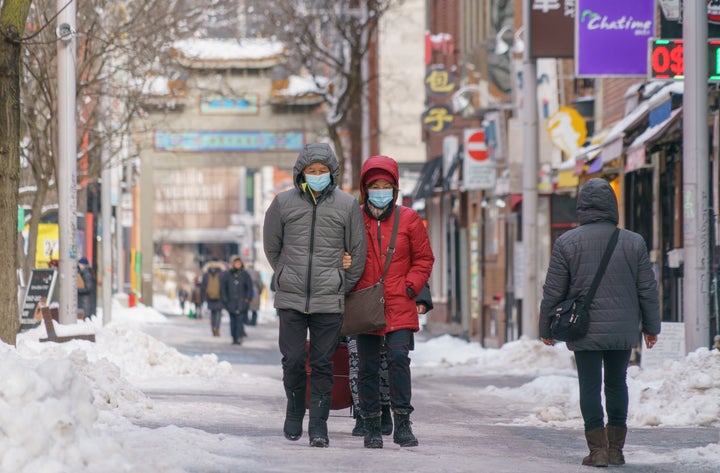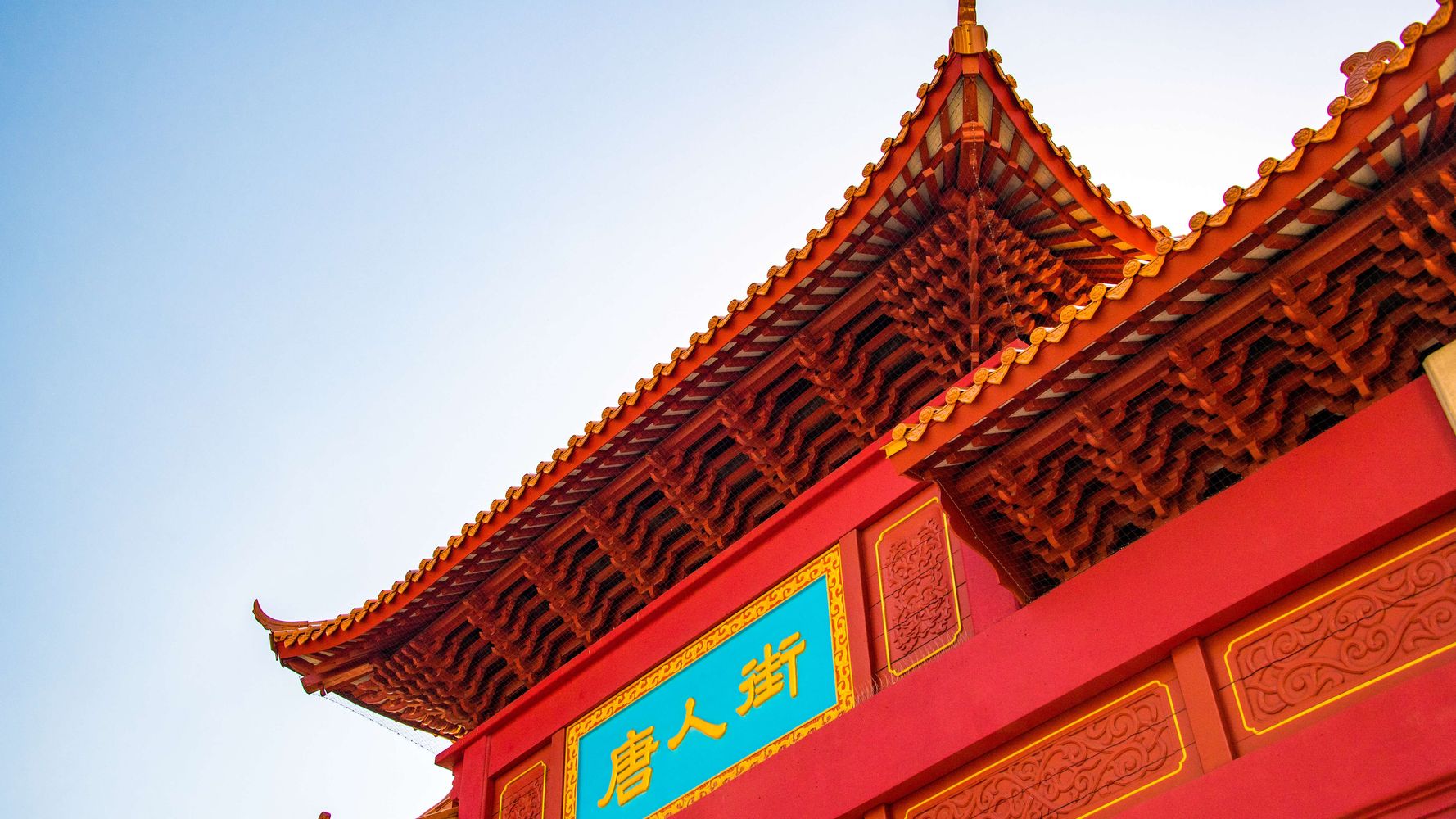[ad_1]
MONTREAL — As the Lunar New Year begins, many in Montreal’s Chinatown hope the year of the Ox will bring a better fortune than the last.
But restauranteur Benny Shek doesn’t dare to hope for the future.
“Today is an exception,” he said, bluntly, pointing at his temporary staff of eight scrambling to put together orders for poon choi, a Cantonese dish made with carefully layered abalone, mushrooms, shrimp, fish, pork and chicken and eaten during Chinese New Year.
A year ago, his Chinatown restaurant, Kim Fung, was bustling. On weekends, tourists and locals alike would be queuing to get inside the popular restaurant known for its dim sum and Cantonese fare.
Now, the once busy Shek remains grounded, seated around a flurry of tablets and portable phones, fielding orders from six different delivery apps he’s signed up for since the pandemic.
Takeaway, he said, is not how Chinese food should be enjoyed.
“Chinese food is meant to be eaten here — hot!” Shek, 63, said.
The Hong Kong native said he’s only making 10 per cent of his usual sales. He’s laid off almost all of his 25 staff, leaving behind two — a waitress and cook.
Racism, work-from-home, lack of tourism all blows to Chinatown’s health
One year on, Chinatown, situated by the Old Port — is home to 160 businesses employing 400 people — is fighting for its survival. At the height of the pandemic, Montreal was considered the seventh deadliest place in the world for COVID-19 related deaths due outbreaks in old-age residences.
Due to this stigma, Chinatown and the Chinese community were disproportionately affected by increased cases of racism, vandalism and break-ins. Last year, local leaders asked the government for $1 million in relief funds to save Chinatown and revitalize the area. Consultations are still underway, and nothing has been finalized.
The bulk of Chinatown’s clientele — tourists and office workers — have stayed away due to travel bans and work-from-home measures. With the recent 8 p.m. curfew in Montreal, it has placed added strain on businesses.
The city is also home to the most restaurants per capita in North America, and when the pandemic hit, Chinatown’s cash-only businesses had to quickly adapt to new measures of contactless payments and delivery apps that take up to 30 per cent commission fees.
Younger, social-media savvy restauranteurs were able to hit the ground running when dine-in service closed again in September. Meanwhile, older mom-and-pop shops who refrained from delivery apps or social media were left behind. With local, elderly residents remaining mostly indoors, foot traffic to Chinatown suffered as well.

Joe Lee, 40, owner of Chinese restaurant Mon Nan, said it’s been difficult being open four hours a day due to the curfew, versus his usual 3 a.m. closing time a year ago. Since then, he’s had to lay off 40 per cent of his staff and rely on delivery apps, but he wished the companies would lower the commission fees as seen in B.C. and Ontario, where they have dropped to 15 per cent.
On the upside, his wife, Shan Cheung, 35, used social media for promotion and brought 20 per cent new clientele.
One lesson from the pandemic, Lee learned, is to scale down the menu after COVID-19.
“We don’t need 200 items, maybe just 30, tops,” Lee said.
Nearby Cantonese barbeque restaurant Dobe and Andy echoed similar experiences. Co-owner Eric Ku, 38, said he and his two brothers attracted new clientele through Instagram and opened a takeaway counter through the summer.
“It had a food-truck vibe,” Ku said, explaining how the pandemic has given him time to re-imagine the restaurant. Similar to Lee, scaling down the menu, testing modern recipes and refining items to warrant a small price increase, will be his next task. Ku said this Chinese New Year will be different, with no lion dances coming through Chinatown and smaller family dinners.
To combat anti-Asian sentiments earlier this year, Chinatown community members partnered with restaurants to distribute thousands of fortune cookies with different messages, such as: “Discrimination hurts; solidarity cures.”
Local food blogger, Jason Lee, commends such campaigns, but was disappointed by the lack of allyship outside the community to condemn racism against Asians.
“Why are [the Chinese community] the only ones finding ways to educate people not to be racist?” Lee asked.
Racism is a topic some Asians are shy to discuss, but it’s happening. Elderly folks are most vulnerable; many Asian restaurants employ older staff as cooks, waiters and delivery drivers, and some have been racially attacked.
“Personally, I was verbally sworn [at] repeatedly in the bus on my way home. This was the very week ‘[former US President Trump] called the coronavirus on television ‘kung flu’ and the ‘China virus,’” wrote Montreal Chinese Association vice-president Bryant Chang, 69, in a text. He works as a part-time food delivery driver for Mirama restaurant. He added racism against Asian people has been “very real and visible on all fronts” after COVID-19.
Statistics Canada published a survey in July 2020 saying 30 per cent of respondents who identified as Chinese said they’ve perceived an “increase in harassment or attacks on the basis of race, ethnicity, or skin colour” since the start of the pandemic.
In the US., there’s been a spate of attacks against elderly Asian-Americans recently. A Thai man was violently pushed to his death and a Filipino man was slashed in the face with a boxcutter on the New York City subway. Celebrities such as Daniel Dae Kim and Daniel Wu have spoken up about the attacks, calling for help and offering a $25,000 cash reward for information on the suspects.
Fo Niemi, executive director of the Center for Research-Action on Race Relations, said more reporting is needed. With an older, immigrant population such as Chinatown, many are reluctant to report racist incidents.
“Asians are perceived as ‘model minorities’,” Niemi said, adding that culturally, it’s uncommon for Chinese targets to voice their troubles publicly. Many unknown victims may be suffering in silence.
But some who know the area well have faith in its resilience. Since the times of prohibition, Chinatown has constantly reinvented itself, said Melissa Simard, founder of Round Table Tours and Chinatown food guide since 2015.
In the past, Chinatown was a place to satiate vices. There was the red-light district, massage parlours, opium dens and illegal gambling houses. “It was a party place,” Simard said, adding the area cleaned up after The Second World War and later became more pan-Asian with the wave of immigration in the 1980s and exodus of Cantonese speakers to the suburbs.
Simard said she’s confident Chinatown will weather the pandemic. “It’s been through worse,” she said.
As for Shek, Lee and Ku, they believe they can stay afloat at least until the summer. But change will need to come quickly.
“Chinatown is already fading. For it to survive, it needs to be revitalized, or else it will die,” said Lee.
Calling all HuffPost superfans!
Sign up for membership to become a founding member and help shape HuffPost’s next chapter
[ad_2]
Source


